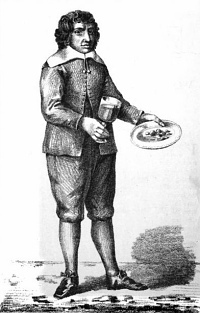
London had a curious visitor in the 17th century: Francis Battalia, an Italian said to subsist on stones. “His manner is to put three or four stones into a spoon, and so putting them into his mouth together, he swallows them all down one after another; then (first spitting) he drinks a glass of beer after them,” wrote John Bulwer in his Artificial Changeling of 1650. “He devours about half a peck of these stones every day, and when he chinks upon his stomach, or shakes his body, you may hear the stones rattle as if they were in a sack.”
A Dutch ship discovered a second stone eater on a northern island in 1757 and brought him to Avignon, where a Father Paulian declared himself “fully convinced that he is no cheat.” And in 1788 London exhibited a third such man, “the most Wonderful Phenomenon of the Age, who GRINDS and SWALLOWS STONES, &c.,” “subsisting on pebble flints, tobacco pipes, and mineral excrescences.”
What accounts for this? In Miracle Mongers and Their Methods (1920), Houdini wrote, “I watched several performances of one of these chaps who swallowed half a hatful of stones, nearly the size of hen’s eggs, and then jumped up and down to make them rattle in his stomach. I could discover no fake in the performance, and I finally gave him two and six for his secret, which was simple enough. He merely took a dose of powerful physic to clear himself of the stones, and was then ready for the next performance.” Draw your own conclusions.
